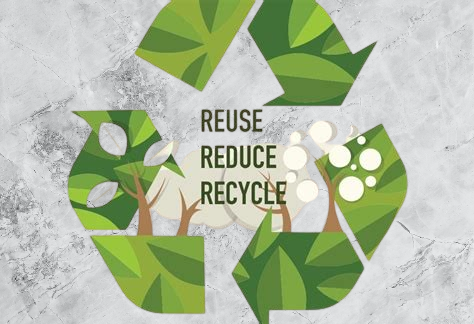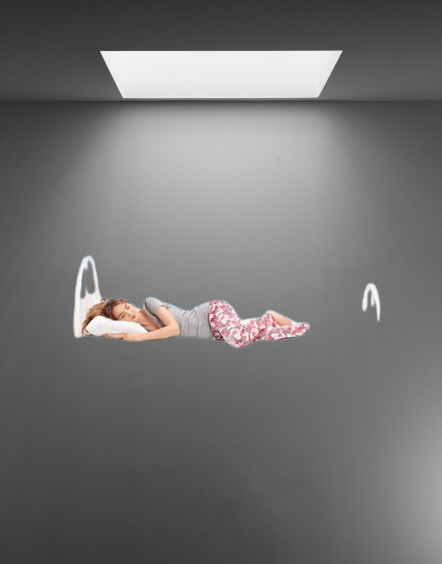
Understanding Stress and Its Impact on Daily Life
Stress is a natural response to challenging situations, often characterized by feelings of tension, worry, or pressure. Individuals experience stress in various forms, and its triggers can stem from personal, professional, or environmental factors. Common causes include work-related pressures, financial concerns, and relationship difficulties. These stressors can lead to both acute and chronic stress experiences, significantly influencing an individual’s well-being.
The physiological response to stress is complex and involves a chain reaction in the body. When faced with a stressor, the body activates the ‘fight or flight’ response, releasing hormones such as adrenaline and cortisol. This reaction prepares the body to respond to perceived threats, increasing heart rate and blood pressure, and redirecting blood flow to essential organs and muscles. While this response can be beneficial in short bursts, chronic stress can lead to detrimental health issues. Prolonged exposure to stress hormones can weaken the immune system, increase the risk of cardiovascular diseases, and contribute to mental health disorders such as anxiety and depression.
The impact of stress on daily life cannot be underestimated. Individuals often report decreased concentration and lower productivity levels in the face of stress. Memory can also be affected, as chronic stress may impair cognitive functions. Furthermore, the relationship between stress and physical health is well-documented—conditions such as headaches, gastrointestinal issues, and sleep disturbances are frequently reported among those experiencing high levels of stress. Recognizing the signs of stress is essential for individuals to address their mental and physical health proactively, as unmanaged stress can lead to significant long-term consequences.
The Role of Environment in Stress Management

Our surroundings play a significant role in shaping our mental and emotional well-being. Numerous studies have demonstrated that an organized environment can directly contribute to reduced stress levels and improved focus. Conversely, cluttered and disordered spaces often lead to feelings of overwhelm and anxiety. When individuals are faced with a chaotic environment, their ability to concentrate diminishes, making it challenging to complete tasks or relax. This constant visual distraction can create a sense of urgency and tension, ultimately increasing stress levels.
A cluttered home or workspace sends signals to the brain that tasks are unfinished, engendering a feeling of being out of control. These signals can manifest physically, causing irritability, frustration, and even mental fatigue. On the other hand, a clean and organized space promotes a sense of calm and order. When everything has its designated place, individuals can easily find what they need, reducing the time and effort spent searching. This ease of navigation fosters a more positive mindset, essential for effective stress management.
Moreover, an organized environment can influence one’s ability to engage in positive habits. For instance, a tidy kitchen encourages healthier cooking and eating practices, while an uncluttered workspace can increase productivity. Cleanliness and organization contribute significantly to mental clarity. When individuals take the time to create a space that is aesthetically pleasing and functional, they are better equipped to handle daily stressors. Therefore, to cultivate a stress-reducing environment, it is crucial to assess and organize one’s surroundings strategically. By transforming cluttered spaces into serene retreats, individuals can take a significant step towards enhancing their overall well-being.
What is Home Organization
Home organization refers to the systematic arrangement and management of personal spaces within a residence to foster a sense of orderliness and tranquility. At its core, home organization involves decluttering, categorizing items, and establishing dedicated spaces for belongings, thereby enhancing accessibility and functionality. Effective home organization not only contributes to an aesthetically pleasing environment but also promotes mental well-being by reducing stress and anxiety associated with disorganization.
Numerous strategies can be employed to achieve a well-organized home. One prevalent technique is the “KonMari Method,” popularized by Marie Kondo, which emphasizes keeping only those items that “spark joy.” This method encourages individuals to engage in thoughtful reflection about their possessions, ensuring that each item serves a purpose. Another widely recognized approach is the “4-Box Method,” which involves sorting items into four distinct categories: keep, donate, trash, and relocate. This technique provides a structured framework to assist individuals in making decisions about their belongings.
Adopting an organized mindset is crucial for maintaining an orderly home. This mindset encourages individuals to regularly assess their living spaces and to implement a routine for tidying up. Setting clear goals, such as designating specific areas for storage or establishing a daily cleaning schedule, can cultivate a more organized environment. Additionally, incorporating technology, such as organization apps, can help individuals track their progress and stay motivated in their efforts.
Ultimately, effective home organization is not merely about aesthetics; it embodies a holistic approach to creating a serene living environment that contributes positively to one’s mental health. By employing various organizational techniques and nurturing an organized mindset, individuals can significantly reduce the chaos often associated with cluttered spaces.
How Home Organization Can Reduce Stress Levels

The relationship between home organization and stress reduction has been a focal point of various studies, revealing significant insights into how an orderly environment can contribute to mental well-being. Research indicates that cluttered spaces can lead to feelings of anxiety and overwhelm. Conversely, a well-organized home promotes a sense of control and calm, ultimately aiding in alleviating stress levels.
Expert opinions suggest that the cognitive load associated with a disorganized environment can negatively impact emotional health. Dr. Sherrie Bourg Carter, a clinical psychologist, emphasizes that a clutter-free home can lead to less distraction, allowing individuals to focus better on tasks at hand. This enhanced focus can foster productivity and creativity, which are beneficial for emotional well-being. When individuals are able to locate their belongings easily and navigate their spaces smoothly, they may experience a greater sense of accomplishment and satisfaction.
Moreover, home organization can contribute to improved time management. A tidy home reduces the time spent searching for lost items, allowing for greater efficiency in daily routines. When people spend less time managing clutter, they can redirect their energy towards more fulfilling activities, which can further decrease stress. Activities like organizing not only create a peaceful living environment but also provide a productive outlet, thereby aiding in emotional regulation and stress relief.
Incorporating organizational strategies into one’s home can bring about significant psychological benefits. For instance, practices such as decluttering, utilizing storage solutions, and simplifying one’s living space can create a serene atmosphere. This organized backdrop encourages mindfulness and relaxation, which are essential components in managing stress levels effectively. Overall, fostering an organized home environment transcends mere aesthetic appeal, emerging as a viable approach to enhancing mental clarity and emotional stability.
Steps to Achieve Home Organization
Achieving home organization involves a systematic approach that focuses on decluttering, designing efficient storage solutions, and fostering sustainable habits. The first step is to assess the current state of your living space. Begin by identifying areas that require attention, focusing on rooms that contribute most to feelings of stress, such as the kitchen, bedroom, or home office. Creating a comprehensive inventory of clutter hotspots helps to prioritize your organizing efforts.
Once you identify areas of clutter, it is essential to engage in decluttering. This process requires a candid evaluation of the items you possess. One effective method for decluttering is the ‘four-box’ system, which consists of designating boxes for ‘keep,’ ‘donate,’ ‘discard,’ and ‘relocate.’ As you go through each room, place each item into the corresponding box, which encourages decision-making and helps eliminate unnecessary belongings. This step not only enhances physical space but also mentally prepares you for the organization process.
After decluttering, attention turns to designing efficient storage solutions. Utilize vertical and hidden spaces effectively by incorporating shelving units, bins, and drawer organizers. Labeling containers can improve accessibility, enabling you to find items quickly and fostering a sense of accountability in maintaining organization. Consider investing in multifunctional furniture to maximize space, promoting a clean and organized environment.
Lastly, establishing sustainable organization habits is crucial for maintaining your organized home. Consider implementing a ‘one-in, one-out’ rule, where every new item brought into the home requires the removal of an existing item. Additionally, routine organization sessions, such as weekly clean-ups or seasonal decluttering, can prevent accumulation. By integrating these practices into your everyday life, you contribute to a less stressful and more organized living environment, significantly impacting your overall well-being.
The Psychological Benefits of an Organized Home
Creating an organized home environment can yield significant psychological benefits, impacting mental health and overall well-being. When living spaces are tidy and orderly, they foster a sense of control and accomplishment. These feelings are crucial in enhancing focus, as individuals can better concentrate on tasks without the distraction of clutter. An organized home eliminates visual chaos, allowing one to prioritize effectively and engage fully in daily activities.
Furthermore, a well-maintained and orderly space promotes mindfulness, encouraging individuals to be present in their surroundings. When one’s environment is structured, it becomes easier to cultivate a sense of calm and clarity. This mindfulness can translate into reduced anxiety levels, as individuals feel less overwhelmed by the visual cues of disorder. As clutter is often linked to stress, adopting home organization strategies can mitigate these feelings and create an atmosphere of peace.
In addition to focus and mindfulness, an organized home can significantly elevate mood levels. The act of decluttering can be therapeutic, providing a fresh start and a sense of renewal. Studies have shown that individuals living in tidy homes often report higher levels of contentment and satisfaction. The simple act of organizing can boost productivity, as spaces designed for efficiency promote a more positive mindset. Introducing elements such as designated areas for items or implementing regular cleaning schedules can further enhance these benefits.
Overall, the psychological advantages of having an organized home extend beyond mere aesthetics. By fostering focus, encouraging mindfulness, and elevating mood levels, an organized living environment contributes positively to mental health. Taking the time to create an orderly space can lead to lasting improvements in one’s emotional well-being.
Common Organizational Pitfalls to Avoid

Effective home organization is essential for cultivating a serene living environment, yet many individuals inadvertently hinder their own progress. One prevalent mistake is allowing clutter to accumulate, which can swiftly overwhelm any organizational efforts. It is imperative to establish a consistent decluttering routine, ensuring that items are regularly assessed for their utility. Without this practice, homes can quickly revert to a state of disarray, negating any benefits derived from initial organizational measures.
Another common pitfall is over-committing to organization projects. Enthusiasm can drive one to undertake monumental clean-outs or revamps of various spaces at once. However, this often leads to burnout, as the scale of the task can prove daunting and unmanageable. It is advisable to approach home organization with a measured perspective, breaking down larger projects into more achievable tasks. This incremental approach not only mitigates stress but also fosters a sense of accomplishment as each smaller goal is successfully met.
Additionally, setting unrealistic expectations is another frequent mistake among individuals embarking on home organization. Many people envision an immaculate, Pinterest-perfect home instantly after a single organization session. This misconception can lead to feelings of inadequacy or frustration when reality does not align with these ideals. It is crucial to recognize that effective organization is a continuous journey rather than a one-time event. Embracing the process and allowing for gradual improvement will create a more sustainable and satisfying approach to home organization.
By being aware of these common pitfalls—accumulating clutter, over-committing to projects, and setting unrealistic expectations—individuals can create a more effective and less stressful organizational plan. Recognizing and addressing these challenges will ultimately contribute to a more organized and harmonious home environment.
Maintaining Organization: Tips for Longevity
Keeping a home organized is not just a one-time task; it requires consistent effort to enjoy its long-term benefits. One effective strategy is to establish daily routines that incorporate organization into your everyday life. Simple habits, such as putting items back in their designated spots immediately after use, can prevent clutter from accumulating. Consider creating a daily cleaning schedule that includes quick tidying sessions, ensuring that organization remains a priority amidst busy schedules.
Seasonal reorganizing is another crucial strategy for maintaining an organized space. As seasons change, so do the items we use in our homes. Setting aside time every few months to reassess your belongings can help determine what is necessary and what can be donated or discarded. This process not only keeps your space tidy but also refreshes your environment and eases the burden of excess. Many individuals find that participating in the “one in, one out” rule—where you remove an item every time you bring in a new one—further sustains organization over time.
Adopting a minimalist approach can significantly benefit your organization efforts. By carefully evaluating your possessions and keeping only what you truly need or love, you can create a less cluttered, calmer environment. This reduction in physical items can lead to a corresponding decrease in mental stress, as fewer belongings mean less decision-making. A streamlined home also facilitates easier maintenance, allowing you to focus on what matters most. Emphasizing functionality over aesthetic excess can lead to sustained organization and minimized stress levels.
By integrating these strategies into your lifestyle, you can foster an organized space that continues to support your mental well-being over time. Simple daily habits, seasonal reassessments, and a minimalist mindset will create a harmonious environment that promotes stress relief and enhances your overall quality of life.
Real-Life Experiences: Testimonials and Case Studies

The practice of home organization has gained considerable attention not only for its aesthetic appeal but also for its profound impact on mental well-being. Numerous individuals have shared their journeys, often describing remarkable transformations that came from decluttering and reorganizing their living spaces. For instance, Sarah, a busy mother of two, found herself overwhelmed by the relentless chaos of toys and household items scattered throughout her home. After participating in a home organization workshop, she implemented a strategy of sorting, categorizing, and tackling one room at a time. This process not only allowed her to create a more minimalist environment but also significantly alleviated her feelings of stress. Sarah noted that having a dedicated place for each item brought her a sense of calm and control she had previously lacked.
Another compelling case is that of John, a remote worker who noticed a direct correlation between his cluttered workspace and his productivity levels. The disarray in his office left him feeling anxious and unfocused. Determined to combat this, he followed a structured organization plan, establishing clear zones for work materials and personal items. Following this initiative, John reported a noticeable decrease in his stress levels and an improvement in his overall work performance. He emphasized that the simple act of tidying up led to mental clarity, enabling him to prioritize tasks effectively and approach his day with renewed energy.
Moreover, testimonials from professionals in psychology highlight similar experiences among clients who engage in home organization processes. Many found that decluttering their environments not only improved their physical space but also helped in addressing underlying emotional challenges associated with anxiety and depression. By cultivating a serene and organized environment, individuals reported feelings of empowerment, greater focus, and a sense of accomplishment. These personal stories illustrate the profound connection between a well-organized home and enhanced mental well-being. Through these experiences, it becomes evident that home organization can serve as an effective strategy for stress reduction, promoting a harmonious living space that positively influences mental health.



[…] it difficult for individuals to fall asleep or stay asleep throughout the night. The presence of organized spaces versus cluttered areas can thus drastically alter sleep patterns and overall sleep […]